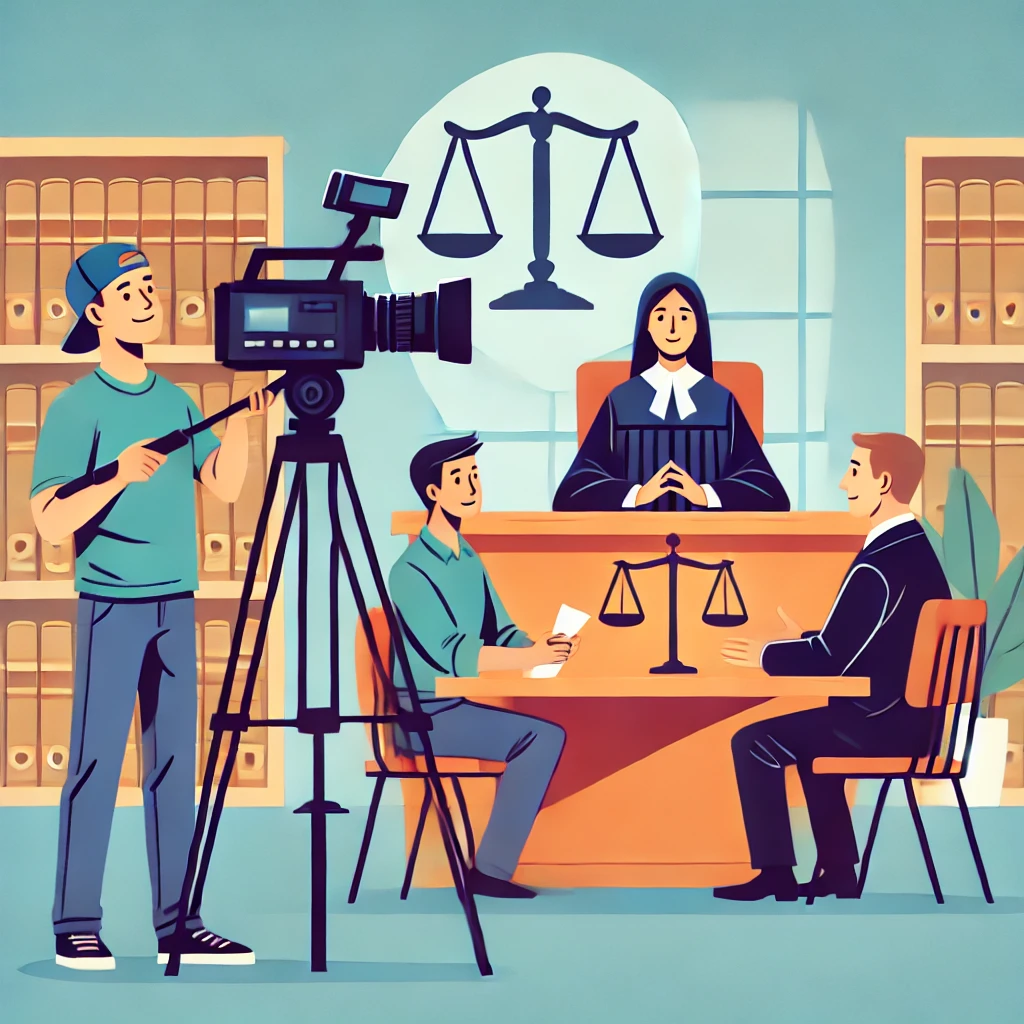Why Lawful Videography Is Crucial for Accurate Court Recordings
The function of legal videography in court room setups can not be overemphasized, as it acts as an essential tool for protecting the integrity of court documents. By catching both verbal and non-verbal interaction, it boosts the clearness of witness statements and mirrors the subtleties of courtroom communications. This detailed documents not only help in reducing potential misunderstandings yet also sustains appellate evaluations, therefore strengthening the judicial process. The implications of integrating lawful videography right into conventional court room practices elevate essential questions regarding its wider impact on the legal system. What might these effects require?
Value of Visual Proof
In the world of legal procedures, the significance of aesthetic proof can not be overstated. Aesthetic proof acts as a powerful tool in establishing truths, proving statements, and enhancing the total clarity of a case. This kind of proof, that includes pictures, videos, and layouts, can offer a tangible context that verbal summaries often lack, consequently supplying courts and courts a clearer understanding of the situations bordering an instance.
In addition, visual evidence aids in the retention of details. Human cognition is naturally visual, and people are most likely to remember and understand info provided in an aesthetic format. In the courtroom, this can be important, as compelling aesthetic evidence can guide opinions and reinforce the narrative presented by legal reps.
Furthermore, using aesthetic evidence can lessen misunderstandings and uncertainties that usually occur from spoken exchanges. By giving a direct representation of events, aesthetic proof helps to get rid of subjective interpretations and fosters a much more unbiased exam of the truths. The combination of visual proof into lawful proceedings not only enhances the integrity of the judicial procedure yet also enhances the possibility of achieving a just end result.
Recording Non-Verbal Cues
Utilizing sophisticated videography strategies can dramatically enhance the capture of non-verbal signs throughout lawful process. Non-verbal interaction, consisting of face expressions, body movement, and eye get in touch with, plays a crucial function in conveying emotions and intentions that might not be clearly stated in spoken testament. legal videography. Legal videography uses high-def cameras and critical angles to make sure that these subtle signs are recorded with clarity and precision
The capacity to examine non-verbal behavior can give useful context to declarations made during court sessions. As an example, a witness's hesitation or confidence can be translated through their stance or motions, possibly affecting the jury's assumption of reliability. The use of close-up shots can aid concentrate on a speaker's expressions, allowing for an extra nuanced understanding of the testament.
Additionally, incorporating multiple electronic camera angles can produce a detailed sight of interactions, highlighting characteristics between celebrations included. This diverse approach not only enhances the accuracy of the court document yet also help in protecting the stability of the judicial procedure - legal videography. Inevitably, recording non-verbal cues with lawful videography promotes a richer, more full representation of Read Full Article court procedures

Enhancing Testimony Integrity
The integrity of testament can be dramatically bolstered with using top quality legal videography. Video recordings act as an objective tool that records not only the talked words of witnesses yet likewise the nuances of their delivery, including tone, pacing, and psychological expressiveness. This complex documents provides a more clear understanding of the witness's reliability and purposes, which can be crucial in legal procedures.
Additionally, legal videography reduces the potential for false impressions that may emerge from composed records alone. When jurors can observe a witness's attitude and body movement in conjunction with their testimony, they are much better outfitted to evaluate the credibility and integrity of the evidence offered. This visual context can strengthen the testimonial story, making it a lot more engaging and reliable.
Additionally, the existence of a video clip recording can deter prospective incongruities in testament. Witnesses might be more cautious in their statements when they recognize they are being recorded, bring about more exact and truthful accounts. Generally, premium legal videography improves the honesty of statement, ensuring that the court has accessibility to a total and honest depiction of the truths as shared by the witnesses.
Sustaining Appeals and Reviews
Lawful videography plays an important duty in sustaining appeals and testimonials by offering a comprehensive visual document of court room process. This visual documentation catches not only the talked words of witnesses and attorneys yet additionally the nuances of body language, intonation, and court room dynamics. Such aspects can be crucial in recognizing the context of testaments and disagreements offered.
In the appellate process, where the emphasis gets on errors of legislation and step-by-step fairness, a video record can work as an essential tool for site link appellate courts. It makes it possible for judges to evaluate the original test context, making certain that choices are based upon a full understanding of the proceedings. The capacity to aesthetically examine the disposition of witnesses or the communications in between celebrations can expose understandings that written transcripts might ignore.

Furthermore, lawful videography can help in clearing up obscurities in testaments or step-by-step rulings, consequently enhancing the basis for an appeal. By supplying a trustworthy, objective account of what transpired in court, legal videography not only sustains the stability of the legal process but additionally empowers all parties included to make informed decisions concerning their situations.
Enhancing Court Room Procedures
Enhancing courtroom efficiency, legal videography simplifies processes by providing instant accessibility to aesthetic records of procedures. This technology enables courts, attorneys, and courts to take another look at crucial testimony and evidence, making sure that all events have a clear understanding of the case. By catching the nuances of verbal and non-verbal communication, videography enhances the document, making it easier check here to grasp the context and weight of testimonies.

In addition, video recordings can help with remote engagement in hearings, permitting for greater versatility in scheduling and participation, which is especially valuable in intricate situations entailing multiple stakeholders.
Verdict
In final thought, legal videography plays a crucial role in making certain accurate court recordings by giving important aesthetic evidence that records both spoken and non-verbal communication. This technique improves the dependability of testimonies, supports appellate reviews, and streamlines courtroom procedures. By promoting a comprehensive understanding of courtroom dynamics, legal videography inevitably adds to a lot more equitable judicial outcomes, strengthening the stability of the lawful system and facilitating informed decision-making.